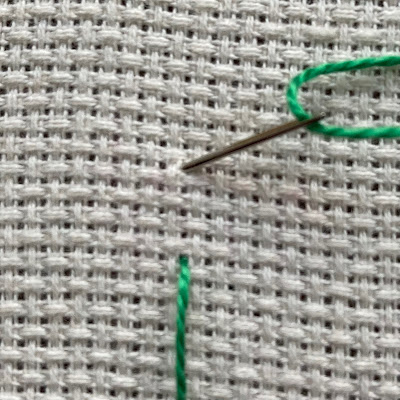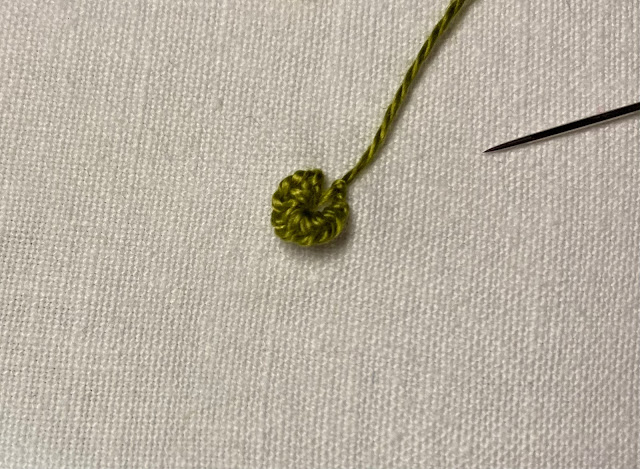Today's stitch, Donut Drizzle Stitch, is based on the Drizzle Stitch of course, and inspired by Brazilian flower embroidery. I found it at Rosalie Wakefield - Millefiori's blog. You can see her photo instructions there.
Mine are below:
Stretch the foundation fabric tight in a hoop.
Make a knot and take the thread out from behind.
Stand the working needle (A) straight up, close to where the thread came out, then remove the thread from the needle.
It's a good idea to stand the needle in a firm pin cushion.
To make the drizzle stitch, first, make a loop like this:
Then place the loop over the needle.
Pull the thread around the needle
until you get a tight knot.
Make a good number of looped knots.
Now we come to the donut part - insert an extra pin or needle (B) in the TOP loop.
Re-thread the needle (A), remove it from the pin cushion and pull it down
through the loops and through the fabric. Keep the extra pin (B) in place.
Take the working needle (A) out again and
insert it in the top loop next to the extra needle (B).
You can now remove the extra needle (B).
Pull the threaded needle (A) through the top loop and the drizzle will become a round donut.
Anchor the thread.
Some donuts are misbehaving and stand up.
You can pin them down
Homework:
Add here.




























































